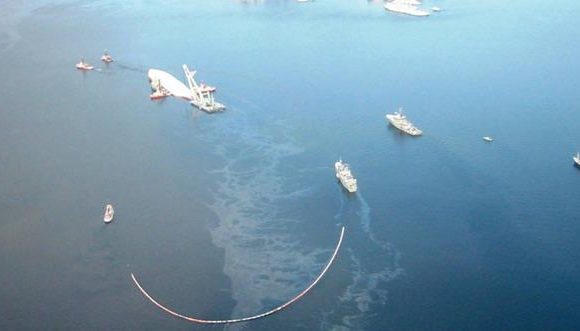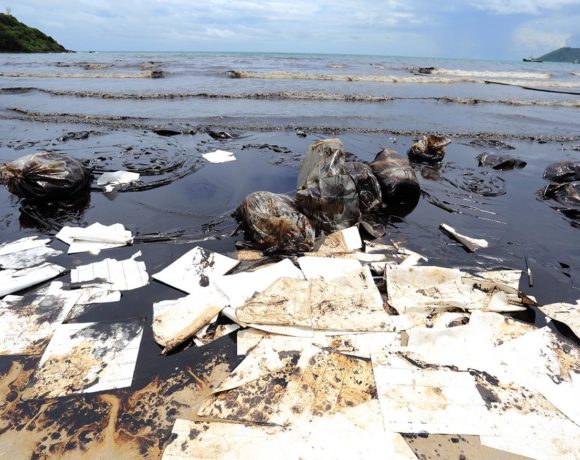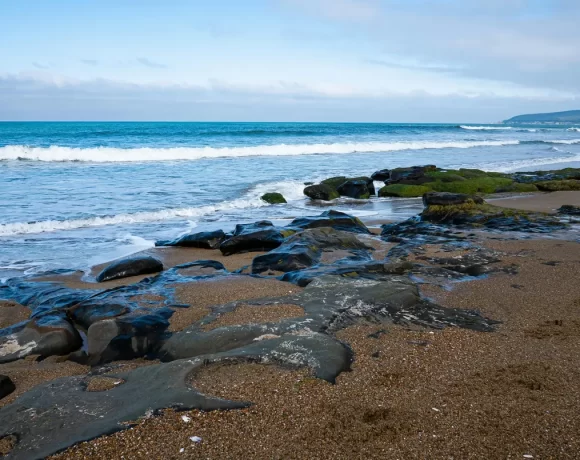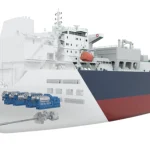What are DESMI-AFTI Oil Herders?

DESMI-AFTI oil herders are liquid agents designed to contract, thicken, and control the spread of petroleum spills on water surfaces. They were primarily developed to control fairly fresh, liquid oil on calm water with drift ice where boom and mechanical recovery devices may not be effective. Under these conditions, the herders concentrate the oil to a thickness suitable for in-situ burning.
How did Desmi-Afti Oil Herders evolve?
A multi-year, multi-partner research program was initiated in 2003 by SL Ross Environmental Research to advance oil spill response in ice. The program included many laboratory tests along with tests at the National Oil Spill Response Research & Renewable Energy Test Facility (Ohmsett), the Ice Engineering Research Facility Test Basin at the US Army Cold Regions Research and Engineering Laboratory (CRREL), and the Fire Training Grounds in Prudhoe Bay The tests found that herding agents persisted long enough to enable in situ burning of relatively fresh, fluid oils in broken or drift ice and that ThickSlick 6535 and Siltech OP-40 were effective herding agents on cold water and in ice conditions. One field test in Barents Sea pack ice involved the release of 630 L of fresh Heidrun crude in a large lead. The free-drifting oil was allowed to spread for 15 minutes until it was far too thin to ignite (0.4 mm), and then DESMI-AFTI herder was applied around the slick periphery. The slick contracted and thickened for approximately 10 minutes at which time the upwind end was ignited using a gelled gasoline igniter. A 9-minute long burn ensued that consumed an estimated 90% of the oil.
As a result of the success with herders for in situ burning in ice, a two-year program of R&D in the lab and at Ohmsett was undertaken in 2009 to determine if there was a potential to use herding agents to improve other areas of marine oil spill response, specifically:
• Employing herding agents in drift ice to enhance recovery of spilled oil with skimmers;
• Using herders to clear oil from marsh areas; and,
• Applying chemical herders around oil slicks on the open ocean to improve the
• Operational effectiveness of subsequent dispersant application
These research studies were variously funded by the ExxonMobil Upstream Research Company; the Bureau of Safety and Environmental Enforcement (BSEE) of the U.S. Department of the Interior; the SINTEF JIP Oil in Ice funding consortium (Shell, Statoil, ConocoPhillips, Chevron, Total, Agip KCO and the Norwegian Research Council); and, the Petroleum Environmental Research Forum (PERF) partners Agip Kashagan North Caspian Operating Company, ExxonMobil Upstream Research, Sakhalin Energy Investment Company and Statoil ASA.
How do Desmi-Afti Oil Herders work?
Herders are applied at a very low rate on the clean water around the perimeter of an oil spill where the herder will form a monolayer. When the monolayer reaches the edge of a thin oil slick it changes the balance of interfacial forces acting on the slick edge and causes those forces to contract the oil into thicker layers. Herders do not require a boundary to “push against” and work in open water. Since the herder forms a monolayer, a small quantity of herder will quickly clear thin films of oil from large areas of water surface. The monolayer will survive for more than 45 minutes in a calm sea thus allowing time to initiate in-situ burning, or for mechanical oil recovery equipment to arrive on scene. Herders confine the oil on the water surface. Neither the oil or chemicals are forced into the water column. Herders do not burn up during an in-situ burn and will continue to act after the fire is extinguished.
Can Desmi-Afti Oil Herders aid in conventional oil recovery?
• Herders concentrate the oil into a thicker layer occupying a smaller water surface area which will increase the encounter rate for any type of static or advancing skimmer. Herders can provide a quick response to slow or halt the spread of oil before boom can be deployed and skimmer operations started. With small, periodic applications of additional herder, the oil can be held in a thickened, fluid layer until recovery equipment can be deployed.
Do Desmi-Afti Oil Herders have other potential uses?
• Herders may help clear oil from areas inaccessible to equipment if they’re not working against the current or wind.
• Herders may protect the shoreline if the wind is parallel to or away from the shore under calm conditions.
• Herders have been used to clear thin oil and sheens from under dock piles and other waterside structures where it was difficult to access the oil.
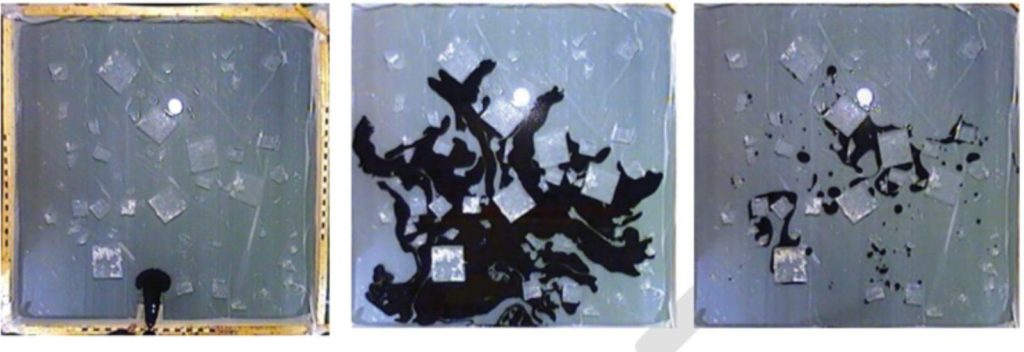
1. Oil is introduced into a test pan with simulated drift ice. 2. The oil rapidly spreads throughout the ice. 3. Herders change the surface chemistry of the water forcing the slick into a smaller area thereby thickening it.

